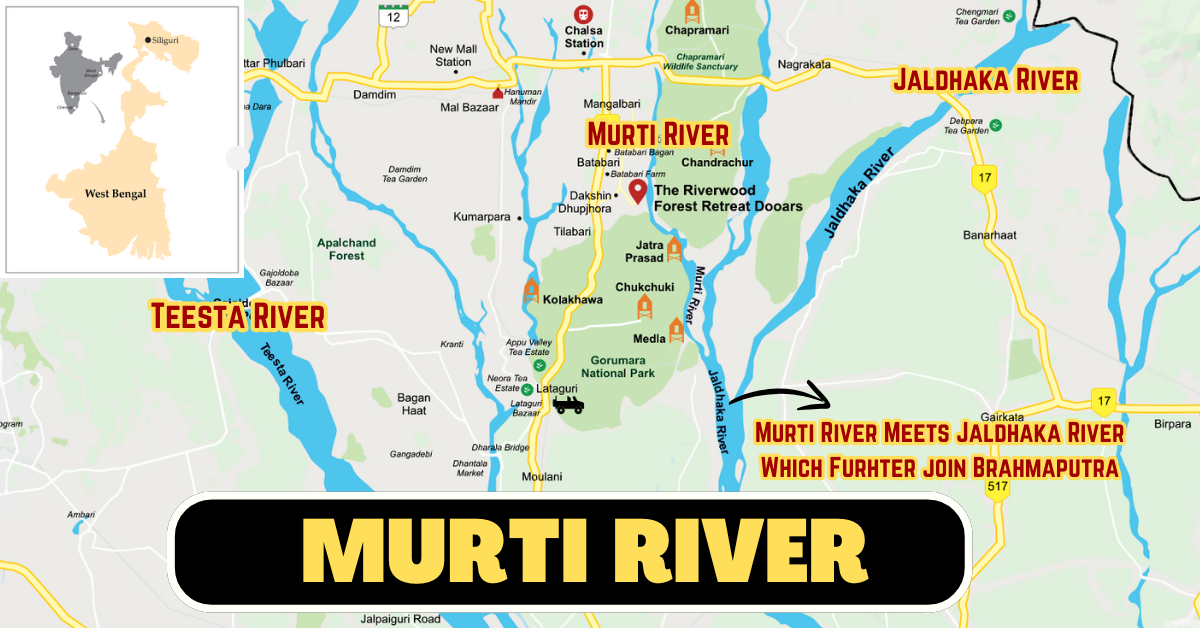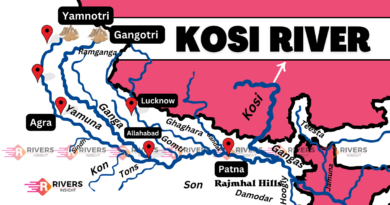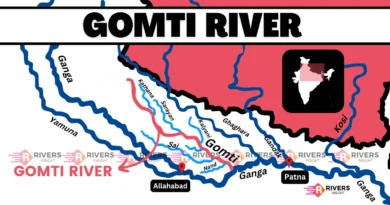Murti River with Map: West Bengal
Murti River is a river in the Dooars region of West Bengal, India, stretching about 80 km in length. Located 60 km from Jalpaiguri, it flows at the foothills of the Himalayas, near the India-Bhutan border in northeastern India.
Table of Contents
Origin and Course of Murti River
The Murti River originates from the Neora Valley National Park, situated in the Kalimpong district of West Bengal. It begins as a small stream, flowing through hilly terrain and dense forests before descending into the Dooars region.
As it flows, the river passes through important wildlife habitats, including:
- Gorumara National Park
- Chapramari Wildlife Sanctuary
It finally merges with the Jaldhaka River, which is a significant tributary of the Brahmaputra River.
Important Locations Along the Murti River
1. Gorumara National Park
This national park lies near the Murti River and serves as an important wildlife habitat in West Bengal. It is home to Indian one-horned rhinoceroses and several other species, including elephants, leopards, and deer.
2. Chapramari Wildlife Sanctuary
Chapramari Wildlife Sanctuary is one of the oldest in West Bengal. It provides shelter to a large population of elephants, bison, and deer. Many migratory birds also visit this region, making it an essential ecological zone.
3. Jhalong and Bindu
These two settlements are located near the Indo-Bhutan border. Jhalong is known for its hydroelectric project, which helps generate electricity for nearby areas. Bindu, the last village of West Bengal before Bhutan, is famous for its cardamom plantations and serene landscapes.
4. Samsing and Suntalekhola
These locations are known for their tea gardens and lush forests. The Murti River helps sustain agriculture in these areas by providing water for tea plantations.
5. Murti Forest Area
This dense forest region supports diverse wildlife. It plays a key role in preserving the ecological balance of the Dooars region.
6. Rocky Island
This island, located on the banks of the Murti River, is known for its large rock formations shaped by the river’s flow.
Each of these locations reflects the significance of the Murti River. It not only supports wildlife and agriculture but also plays a major role in the natural and human-made environment of West Bengal.




